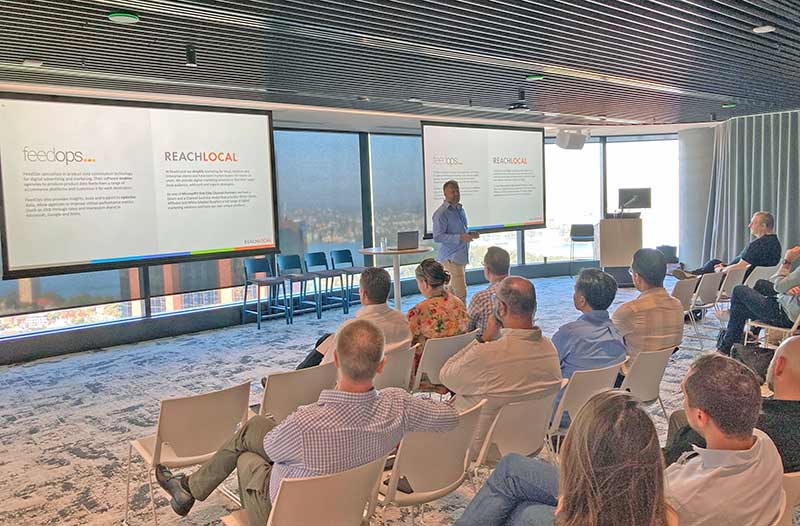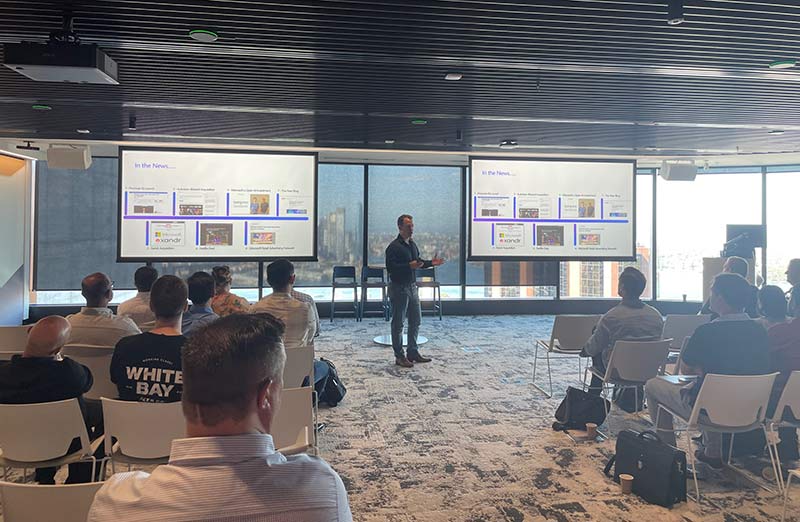Roundtable discussion: What’s the future of e-commerce?

Global e-commerce market to expand to $1 Trillion by 2025
The global pandemic brought on tectonic shifts in consumer behavior; from the movement towards the anywhere-work era to the way we shop. Three years on and with lockdown restrictions lifted, it's important to consider the transformative after-effects of this change and how companies can get the most out of this new environment.
Joining this conversation are some of the top minds in the e-commerce advertising industry: Mark Avedissian, Managing Director, ReachLocal Asia Pacific;Dr. Narelle Hutchesson Managing Director of RQMedia;and Paul Korber, Director of Partner Development at Microsoft Advertising, Asia Pacific. In part one of this roundtable, we’ll each share our top insight on the state of e-commerce in 2023.

Experts from Microsoft, FeedOps, and Reachlocal ANZ share their insights at the eCommerce Masterclass.
Every e-commerce business needs an omnichannel strategy
Frank: As 2023 gains momentum, and we look towards the future with fresh aspirations, it’s important to take a critical look at our previous strategies. Research from retail insights firm Incisiv, in collaboration with Blue Yonder and Microsoft, reveals that a staggering 93 percent of all shopping journeys now start online, up from 81 percent in 2020—making a seamless and intuitive omnichannel experience critical.
If you run a pure play e-commerce business and assume the omnichannel shopping trend doesn't affect you, think again. Amidst today’s global inflation, shoppers are constantly price checking, and that means anything you post online isn't exclusive to your website. Whether it's your online ad or a special deal on your site, they’ll definitely use it against the competition—so don't expect shop assistants to be sympathetic if someone flashes your lower price at the register to claim that immediate price match guarantee. Think of it like this: Shoppers don't think “which channel” when shopping around, it's all about getting the best deal!
Accounting for your ad spend. Attribution has a long way to go
Narelle: E-commerce is here to stay as it is an important part of customer discovery and purchase of brands and store choice. However, customers post lockdown have choices of when and where to shop. We do see e-commerce sales to be lower on weekends for some industries, when generally people have more time to shop, but then conversion rates on Mondays seem to compensate and are often the highest in a week.
Therefore, attribution is the real issue. Sales that occur in-store that are the result of an ad are often lost in tracking and reporting. The increasing consumer privacy-led changes in a cookieless world mean significant changes to how we can target and report on performance media. Finding a source of truth and ensuring that the attributed results marry the advertisers’ financial reality will be the biggest challenge and opportunity in the next couple of years.

Mark Avedissian, Managing Director of Reachlocal ANZ, talks to entrepreneurs about how businesses can gain a competitive edge in a post-lockdown world.
The landscape of e-commerce is changing. Businesses need to stay agile to compete
Mark: In 2023, for a business to truly distinguish itself in an e-commerce world, it must stay in touch with its customers and the direction of the market. We’ve seen the shift, and it’s here now: Artificial Intelligence (AI) that uses machine learning in innovative ways will create personalized experiences, and staying on top of this technology curve is critical. Supply chains are also evolving. Companies must be able to adapt and provide seamless, multi-channel experiences both online, in-store, and through mobile devices. A well-conceived content marketing strategy that addresses customer needs and establishes trust through reviews is also critical.
In a mobile-first world, ensuring a seamless and enjoyable shopping experience on mobile devices is just as important as desktop optimization. And let's not forget the importance of search engine optimization (SEO) in driving traffic and visibility to your e-commerce store. The key to success in e-commerce is to never stop striving for improvement and to always be open to change. Snooze, you lose!

Paul Korber, Director of Channel Development, Microsoft Advertising shares Microsoft’s commitment to advertising and its latest ad innovations in The New Era of Microsoft Advertising.
User experience will be the new currency
Paul: When I think about the future of e-commerce, I’m most excited by the tremendous digital transformation we’re going through right now and the shifts in consumer behavior. AI is going to be a massive game-changer for e-commerce retailers and consumers alike. From fraud detection to predictive analytics, the use cases are endless, and it’s going to push the boundaries on the interactions between customers and brands in really exciting ways.
For example, furniture retailer IKEA developed an app that allows customers to place virtual furniture in their homes before making a purchase. This gives customers a better sense of how the furniture will look and fit in their space, reducing the risk of dissatisfaction and returns.
Ultimately, it’s all about creating a seamless and engaging user experience. Increasingly, consumers are no longer satisfied with just transactional interactions with brands, and this is true in the e-commerce and retail space also. They’re seeking deeper connections, inclusive representation, and values-driven experiences. Brands that can offer these types of value exchanges will be better equipped to thrive in the future of e-commerce.
That concludes the first part of our discussion on the state of eCommerce in 2023. Join us for part two of our conversation as we address the importance of brand marketing for e-commerce businesses.
Stay informed
Sign up for the Microsoft Advertising Insider newsletter to keep up with the latest insights, product news, tips and tricks, thought leadership, customer success stories, and resources.
SEO Company in lucknow




Comments
Post a Comment